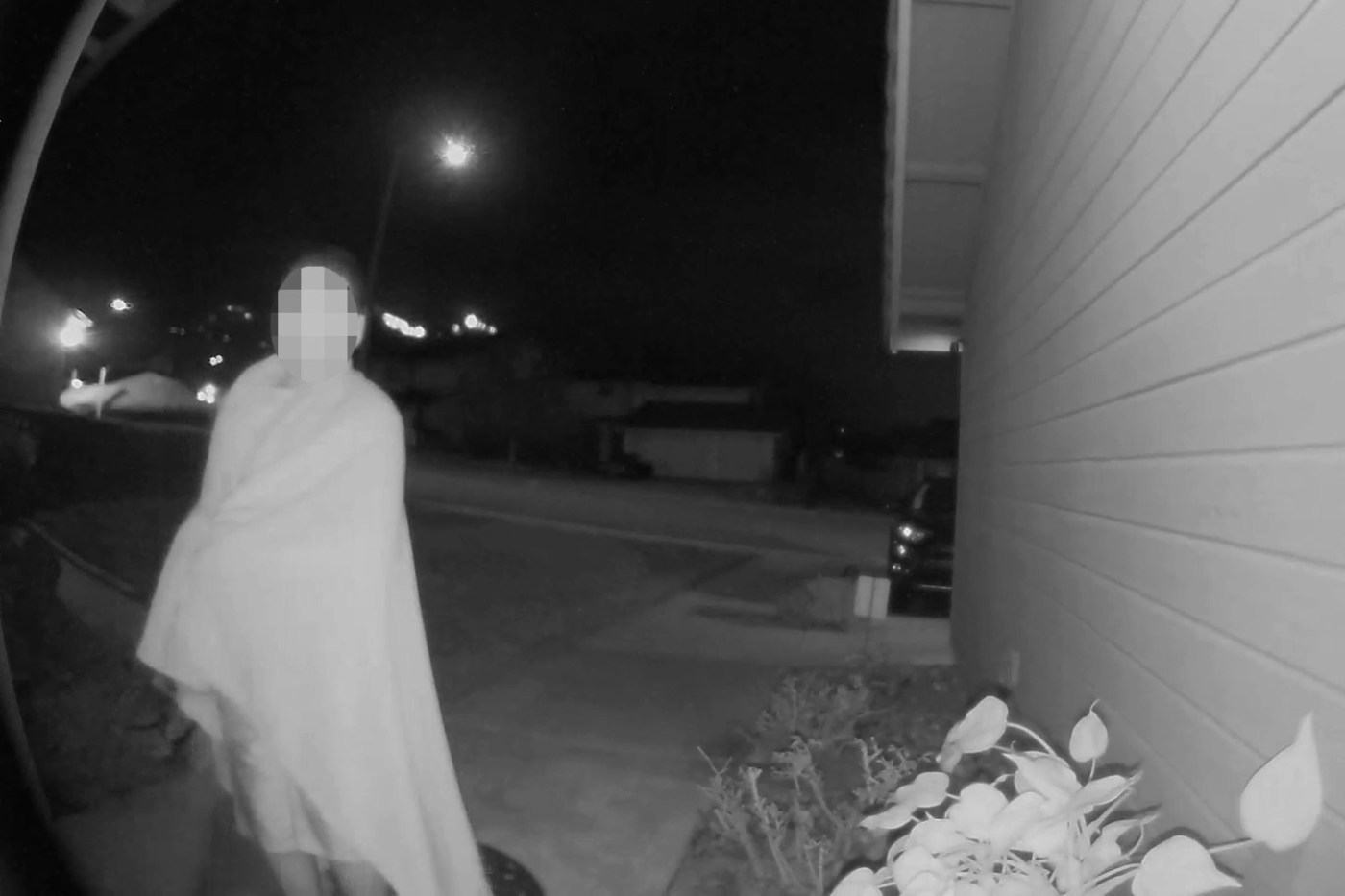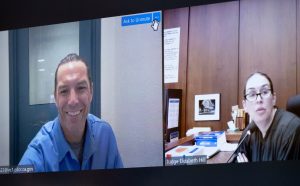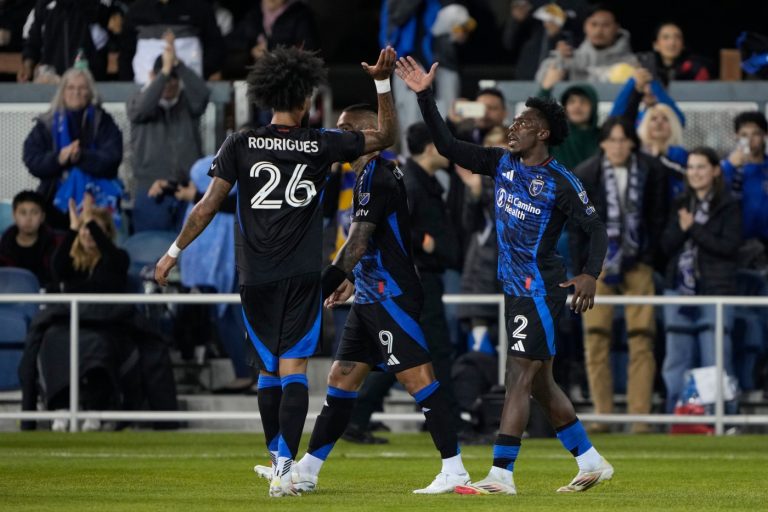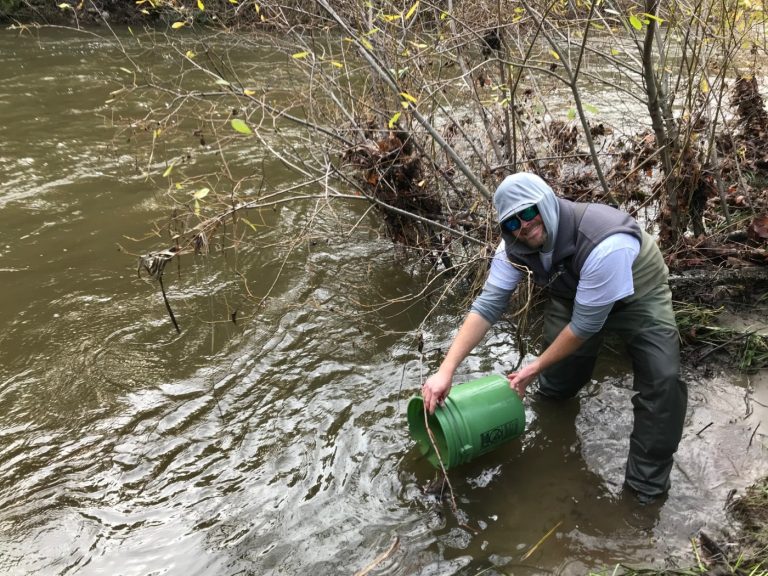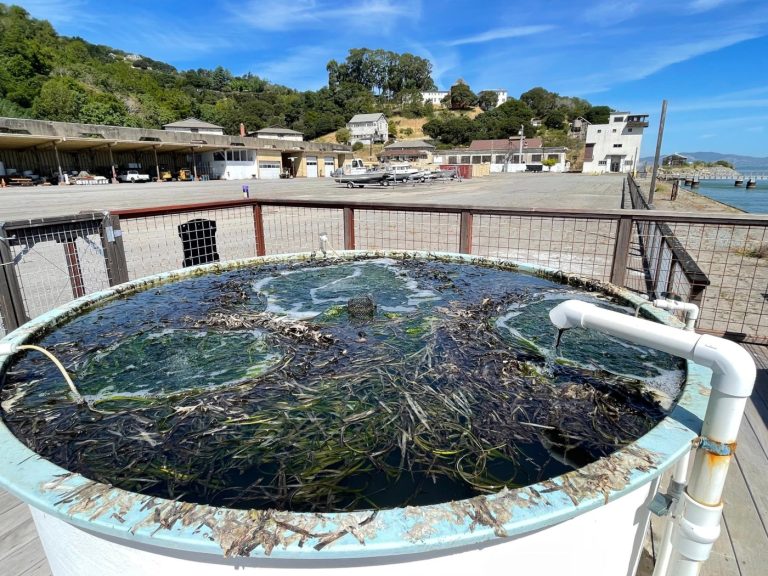SAN JOSE — The boy was no more than 10 and wrapped in a blanket when he knocked on Sunny Lo’s door after dark.
“I’m trying to see if you can take me somewhere,” the boy said. “I’ve been kidnapped.”
Lo’s Ring camera picked up the fear on his face.
“Who kidnapped you?” Lo asked from the doorway of his home in the east San Jose foothills.
The boy turned and pointed to a single-story ranch home across the street — a house that was not a kidnapper’s lair, but an illegal county-run group home for highly-troubled children.
One of a string of 10 group homes called “scattered sites” that have operated over the past four years, the house had no state licenses or official oversight from the California Department of Social Services, and was being run by Santa Clara County in open defiance of warnings by state officials that such sites were “unlawful and must cease.”
Since 2020, five homes investigated by the Bay Area News Group have been the scenes of 632 reports of missing children, 20 psychological breakdowns that resulted in 72-hour mental holds, 13 assault and battery incidents, one alleged rape and one fentanyl overdose.
Santa Clara County’s unsanctioned solution to a crisis in caring for its most troubled children is failing to create a safe, stable environment, state Sen. Dave Cortese, a former county supervisor, told the Bay Area News Group.
“There’s no excuse for a county with a multibillion-dollar budget to be putting kids in harm’s way,” Cortese said. “It should be keeping people up at night.”
Who is responsible?
No one disputes the extreme difficulty counties face in housing and caring for their highest-risk children. Many of the youths at these sites, mostly teenagers, have severe mental illnesses or developmental delays. Many have committed crimes. Most have been abused or neglected by their parents, and are too difficult for foster families to handle.
Still, officials with the county’s Department of Family and Children’s Services say state child welfare reforms are largely to blame, leading to the closure of most established group homes across the state and onerous rules to set up “therapeutic” homes instead.
At least, they say, Santa Clara County is doing better than other California counties that have resorted to more extreme measures: Los Angeles, for instance, put hundreds of children in unlicensed hotel rooms.
Sacramento housed its high-risk youths in a converted juvenile detention center before the state shut it down and Fresno once housed kids in an office building where they slept on conference tables.
At the same time, Contra Costa was caught in 2022 housing two youths at an unlicensed office building in Martinez, before shutting it down.
“Thankfully, children in our County have not needed to have similar experiences,” the Santa Clara County child welfare agency said in a statement.
But in some ways, haven’t they?
Santa Clara County has, in fact, rented hotel rooms for children and their caretakers, but a county spokesperson said Friday evening that hotels are used “only occasionally” and “generally for brief stays” when no other placement options are available. At the scattered site homes, neighbors say security guards are often parked out front to keep the troubled youths from running away.
The county welfare agency acknowledged that “it continues to be a very significant challenge to create stability and address challenging behaviors for the young people with extraordinary needs.” But their scattered sites, they said, offer a “home-like and well-supervised environment.”
Incessant neighbor complaints and landlord outrage, county sources told this news organization, shuttered seven over the past four years.
Three remain open and are still unlicensed. County records, including police incident logs, internal communications and other reports obtained by this news organization show:
At a county-run home in South San Jose, one teenage boy attempted suicide in July of 2021. Neighbors say teenagers often stash drugs in their bushes to retrieve later and park in front of their homes drinking and smoking through the night. When teens attempt to run away, neighbor Mario Contreras said, “the security guard comes chasing them down the street. There are problems with watching them all the time.”
At a Morgan Hill care home, a neighbor was awakened in the middle of the night when police swarmed her driveway. A teenage girl from the care home apparently cut her wrists in a possible suicide attempt. “She got a hold of scissors,” the neighbor said.
In the East San Jose foothills, a teen was rushed to the hospital after a fentanyl overdose in February. In early May, a neighbor said he watched a half dozen law enforcement officers enter the house with a canine unit and guns drawn and pulled out a teenage girl in handcuffs. The landlord, Shane Moran, says he feels deceived by county officials who assured him that other similar care homes “never had a single issue, never had the cops called.” Looking back, he says he should have known better. During a walkthrough, county officials suggested he remove curtain rods, a ceiling fan and pipes from the vintage doorbell chime because they could be used as weapons. “I’m like, ‘Wait,’” Moran said, “’what has happened here?’”
It’s the same question county supervisors have been asking the child welfare agency since the Bay Area News Group raised questions about the illegal home sites in recent weeks.
“Are we out of compliance right now with the state of California on the three homes?” veteran county Supervisor Cindy Chavez asked Damion Wright, director of the Department of Family and Children’s Services, during a May 7 board meeting.
“We’re definitely moving the needle,” Wright said. He said his department is working with the state to obtain licensing by the end of summer for one of the three remaining open homes.
Santa Clara County Supervisor Cindy Chavez, right, have asked Santa Clara County Department of Family and Children’s Services director Damion Wright, left, and Social Services Agency Director Daniel Little about compliance with the state on three active group homes. (Dai Sugano/ Bay Area News Group)
What he didn’t explain is that the county is currently violating state law by housing children without a license. And even if the county managed to get the licenses for which it has applied, those licenses would only allow a state-mandated three-day stay. Unless the county is granted waivers to hold them longer, the county would have to apply for a new, entirely different license.
Members of the Juvenile Justice Commission, who visited two of the home sites last year, found that the county is keeping youth at some sites for months.
The commission also found that the county failed to provide the most basic safety feature at a house in Morgan Hill: smoke detectors.
The hope of even a single license comes more than four years after the state wrote a scathing rebuke to Wright’s boss, Daniel Little, of the county’s Social Services Agency who held Wright’s job in 2020.
The county had failed to “comply with California licensing or child welfare laws,” the May 2020 letter obtained by this news organization said, and had been “unable to articulate a specific plan” for placing children in properly licensed homes. The county “has failed to meet both the specific provisions and aspirational goals” of a previous agreement with the state to make “diligent efforts” to provide care for highly troubled children, the letter said.
The state Department of Social Services demanded a “detailed plan” within 30 days of how the county would “eliminate” the sites. Despite the warnings, the state agency neither fined nor shut down the homes. The state said it has been in discussions to help the county get these sites licensed for years and has so far declined to impose any fines despite its legal authority to do so. The state declined a request for an interview about the scattered sites.
County welfare leaders explained the scattered sites concept to supervisors in 2020 as a short-term solution that could be licensed temporarily by the state. More than four years later, the scattered sites still have no licenses. And some of the sites meant to serve only one or two youths per house have become de facto group shelters.
One that opened in February housed eight young people plus staff in three bedrooms by the end of its first month. Three teenagers were sleeping in a single bedroom and one on a foldout couch in the living room, according to a California Department of Social Services preliminary evaluation.
“Somebody lost their way in social services once again,” said Cortese, who resigned as supervisor in 2020 to run for the state senate.
Growing county criticism
Last year, the county’s child welfare agency came under fire after the fentanyl overdose death of 3-month-old Phoenix Castro, who was sent home with her drug-using father despite warnings she could be in mortal danger there. Supervisors Chavez and Sylvia Arenas called for an overhaul of the child welfare agency. The work is ongoing.
In the midst of the baby Phoenix scandal, Santa Clara County was criticized for embracing the state’s philosophy of keeping families together to the detriment of child safety. Now, that philosophy has left the county with another blindspot in dealing with older children: some of the most troubled among them are left with no legal place to go.
Other counties in the Bay Area have contracted with private providers to form state-regulated “Short Term Residential Therapeutic Programs” that offer the highest level of care for troubled children. Contra Costa County providers run 16 licensed homes, Alameda providers run 10, and San Francisco providers run two homes, according to the state Department of Social Services.
San Mateo County runs two licensed facilities of its own.
In counties that rely on private providers, children who are too difficult to handle can still be turned away, even if beds are open.
Some foster families in Santa Clara County are trained to deal with higher-needs kids, but there are too few of them and many teens still end up in the scattered sites.
Lawyers who have sued local governments on behalf of youths in the child welfare system across California say that Santa Clara County, without better options, is putting itself in serious legal jeopardy.
“What the hell are they doing in Santa Clara County?” asked veteran child and family rights attorney Donnie Cox. “If one of these kids killed himself or hurt somebody else, they are going to find themselves with massive liability.”
A neighborhood where one of 10 unlicensed group homes in Santa Clara County operated over the past four years. (Dai Sugano/ Bay Area News Group)
How it came to this
After the 2015 state welfare reforms, group homes run by private providers that housed most of Santa Clara County’s highly troubled teens closed in a wave. Some applied to become higher-level therapeutic programs but failed to meet state standards and closed, too.
Then, in 2019, Santa Clara County shut down the only county-run facility that was able to accept high-needs children — a county building known as the Receiving, Assessment and Intake Center or RAIC (pronounced rake). The RAIC was designed to be a short-term housing option for those who just entered the child welfare system. But high-needs youths mixed with less troubled ones there, and the board became aware of “drug use, inappropriate sexual behavior, and worse,” according to Cortese, the state senator.
For years, the county even failed to get the RAIC licensed — another fact that the state chastised the county for in its 2020 letter.
In an interview with this news organization, Jeff Smith, the Santa Clara County executive in 2020, said the county approached a wide array of private foster providers hoping they could take in the difficult placements.
“They just said they didn’t think they had the resources to do it,” said Smith, who retired last year.
It was an “excuse” from child welfare officials, Cortese said, that he didn’t buy back in 2019 while he was still a county supervisor. He instructed them to ignore the cost and come up with a plan.
“We’re the purse strings — this is the board of supervisors,” Cortese said. “Tell us what you need to go create those placement options and build it out. That’s what I’m disappointed to hear — they obviously have not done that.”
What’s ahead
As the county and state continue to talk about what to do next, no clear solution has emerged for how to legally house and provide needed services for Santa Clara County’s troubled youths going forward.
“We don’t live in a utopia,” said Steve Baron, a member of the county-administered Child Abuse Prevention Council. “And there aren’t perfect solutions.”
Supervisor Chavez said the first step is to properly license the scattered sites. Next, she said, the county needs to create longer-term solutions that require “much more supervision and much more expertise.”
In extreme cases, she said, when children are at high risk to themselves or others, a last resort option may be considered: “locked facilities for the safety of the child.”
Boy in the blanket
And what happened to the boy in the blanket?
The county-run care home on Canyon Ridge Drive the boy fled that February night in 2020 remained open another two years after he pleaded with neighbors for help.
When neighbor Sunny Lo said he would have to call the police, the boy ran next door to the home of Sonia and Kevin Smith. He ditched the blanket along the way on that chilly winter night and arrived wearing only gym shorts and a T-shirt. They invited him inside and gave him a jacket.
By then, he had changed his story three times. He wasn’t really kidnapped, he told Lo, he was lost. He wasn’t lost, he told the Smiths, he had been to a party and needed a ride home.
“He needed to get to see his grandmother,” Sonia said. “It was heartbreaking.”
She quietly called the police and explained that the boy was surely from the group home across the street. The dispatcher, she recounted, gave her a stern warning: “Do not deliver the child to them.”
Over the next two years, the Smiths watched in anguish as another foster youth — a teenage girl — banged on windows and screamed at the caregivers and at one point sat for hours on the front curb with her bags packed.
“It was the saddest thing,” Sonia said. “She would just wait out there. Nobody ever came.”
The couple doesn’t know what became of the boy who begged for help. And county officials won’t discuss specific cases.
But Sonia remembers the last time she saw him: He was climbing into the back of a police car before it pulled away.
If you or someone you know is struggling with feelings of depression or suicidal thoughts, the 988 Suicide & Crisis Lifeline offers free, round-the-clock support, information and resources for help. Call or text the lifeline at 988, or see the 988lifeline.org website, where chat is available.
